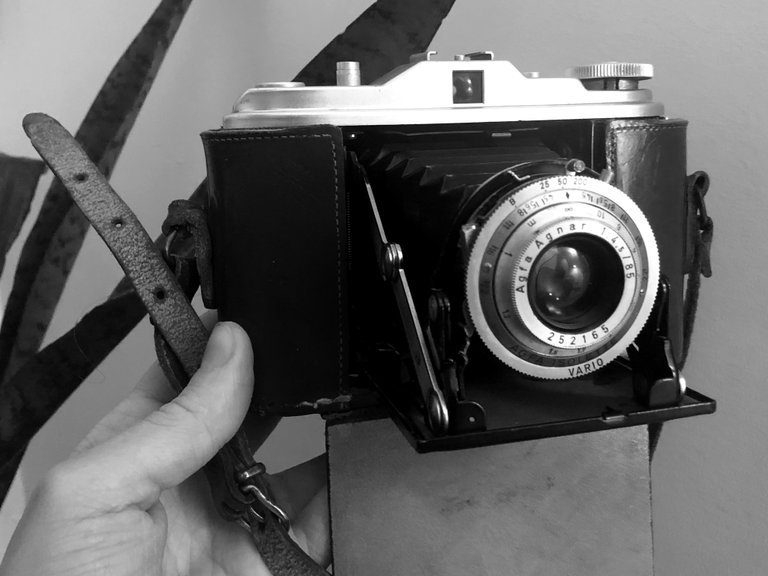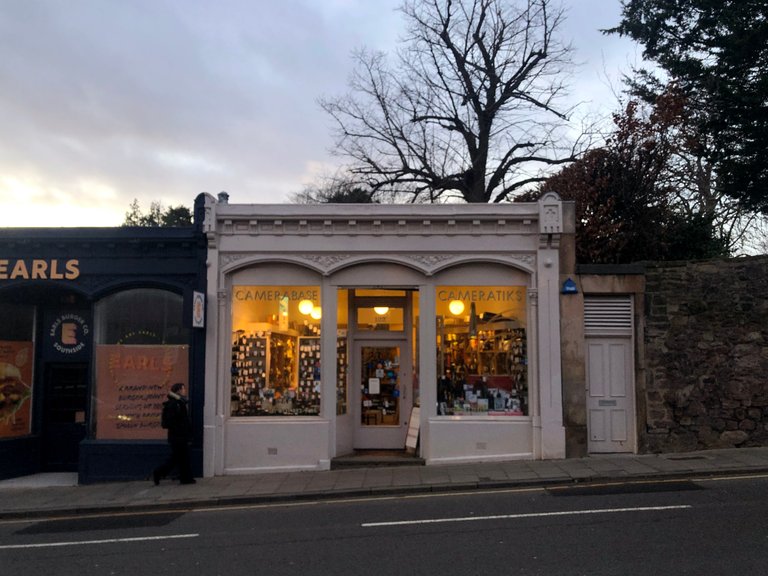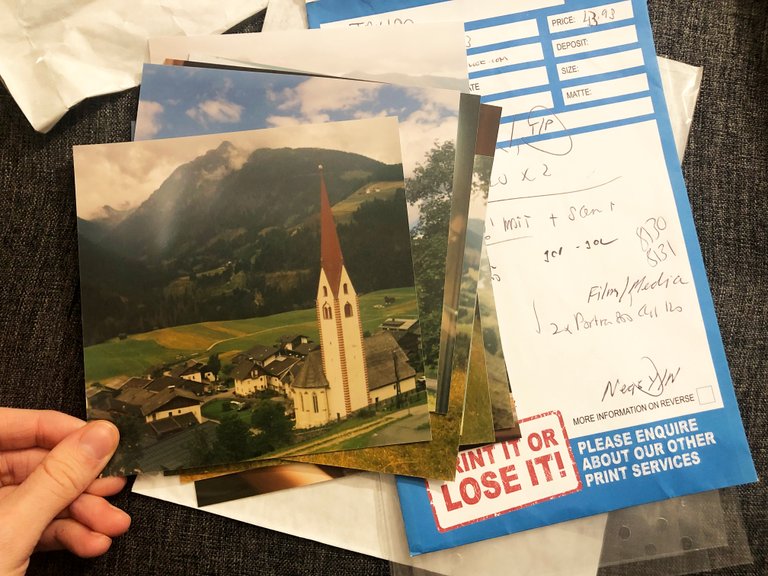Austria through the lens of the Isolette I
My penchant for film cameras has caught me many-a-times gazing wistfully through the windows of weathered camera shops, milling about vintage markets, and immersing in the world of old-fashioned cinematography. Despite its complicated developmental process, I find there’s a simple charm to film that remains unrivalled in modern camerawork. As a child, sunny afternoons were marked by the habitual pursuit of my father's old albums, where my fascination with the quality of the images far eclipsed my interest in their content. Hours spent in the darkroom at college couldn’t quell my longing for further exploration.
Last year, this long-felt desire was finally met when a 1950s Agfa Isolette I crossed my path. My partner kindly lent me his mother’s camera. I was over the moon! The allure of the camera - so compact, the whirring in the windup, the ‘click’ of its shutter - was enticing in and of itself. A hefty load during our gallivants across the mountainside – but did I care? No. In fact, allowing a medium format camera to snugly fit in one's pocket proved to be a compelling advantage: it meant my companion was obliged to carry the heavier rucksack. Haha!
 Agfa Isolette I
Agfa Isolette I
The Isolette is a series of compact horizontal-folding cameras produced by Agfa Kamerawerk AG in Munich, Germany, starting in 1937 and continuing until around 1960. The original Isolette, released between 1937 and 1942, is a dual-format camera with masks for 6x6 cm and 4.5x6 cm format prints. It was actually dubbed the "Soldatenkamera" (soldier's camera) in Germany during the war. This version, the Agfa Isoette I (1951 – 58), is a compact horizontal-folding camera for twelve 6×6 cm on 120 film.
The film was developed by the brilliant Cameratiks in Edinburgh - an independent photographic repair centre with countless years of experience on all types of photographic equipment. Their shopfront, nestled into the older end of Morningside Rd., is just beautiful (see below). From traditional film, compact and SLR cameras through to the most modern digital compact and SLR ranges, their range of expertise is far-stretching. And, with a turnover rate of just two weeks, I didn’t have long to wait until my two spools were developed…!
 Cameratiks shopfront, Edinburgh
Cameratiks shopfront, Edinburgh
 The prints! Feat. St. Lorenzen im Lesachtal
The prints! Feat. St. Lorenzen im Lesachtal
Watching the following clip on the Agfa Isolette L Folding Camera beforehand did prove helpful – albeit mostly retrospectively! (Click here for more insights on pre-digital technologies.) Although not the exact same model of camera, Andrew Gillett's explanation was very applicable to our Isolette I. For example, we were concerned about some possible holes in the bellow, otherwise known as the 'trolitan' (the accordion-like, pleated expandable part of a camera). However, shining a torch through the leather in a dark room proved these fears unfounded.
As you will notice there is, however, a distinct lighter tone to the second batch of photographs taken. Will have to look into this – not sure why the second roll of film was over-exposed. Perhaps it was the aperture setting? I do recall taking into consideration the “sunny 16 rule” – if it’s very bright its f16, cloudy bright f11, cloudy f8, very dull f6. But perhaps I was less diligent the second time around? Maybe someone here might have suggestions?
So, fellow travellers, although I can’t possibly share all of my images I’ve selected a few favourites from both series for your perusal. I’m so very much in love with the results… so delighted I purchased another ISO 800 Portra 120 roll of film for the next batch – haha - wherever that takes me!
 Hochosterwitz Castle
Hochosterwitz Castle
 Stockenboi
Stockenboi
 Kötschach-Mauthen
Kötschach-Mauthen
 Dallach im Drautal, feat. Feldner Hütte
Dallach im Drautal, feat. Feldner Hütte
 En route from Hugo-Gerbers Hütte to Feldner Hütte
En route from Hugo-Gerbers Hütte to Feldner Hütte
 En route from Hugo-Gerbers Hütte to Feldner Hütte
En route from Hugo-Gerbers Hütte to Feldner Hütte
I believe the Agfa Isolette is timeless. It is still very much cherished by vintage enthusiasts (like myself) today. And it’s fun! It was thrilling to work with a camera that featured different rings on the lens barrel - for the focus and the mechanism to cock the shutter. The swing-out spool holder. The release button catapulting the bellow - so satisfying to open, I’m not going to lie. I imagine that, with some further research and being mindful of the machine and its intricacies, rich results will continue to flourish and intensify. More vintage-style updates to share with future #pinmapple adventurers...! Haha!
If there are other film enthusiasts out there, I’m open to advice on readings or source material that you might have. Only in hindsight did I discover Mostly Vintage Camera and a copy of the original manual for the Afga Isolette 4.5 shared online by M. Butkus.
In any case, I promise to keep you posted with my travels, borrowed Isolette in hand. (Thank you, Mich x.)
Congratulations @actaylor! You have completed the following achievement on the Hive blockchain And have been rewarded with New badge(s)
Your next target is to reach 20 posts.
You can view your badges on your board and compare yourself to others in the Ranking
If you no longer want to receive notifications, reply to this comment with the word
STOPTo support your work, I also upvoted your post!